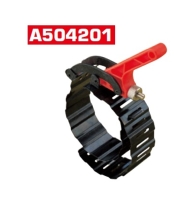Time to put the head back on, which means deciding on head bolt lubrication and torque, a bit classic and fundamental.
CB20 manual says dry. CB23 manual doesnt say.
Torque specs are slightly different but 40 ftlbs is in the overlap
I have no manual for my CB22 engine but assume dry 40 could apply.
My problem is I’ve never installed any threaded component dry and am rather reluctant to start now with a high torque item.
Engineering Toolbox suggests reducing dry torque by 30-40% for SAE40 oil used as an assembly lube
Was going to do that, when I came across this suggestion for deriving a “torque and angle” spec from a dry torque which could then be applied to a lubed bolt.
" Take the dry bolt and torque to a 1/4-1/3 of its published dry torque spec. Then, mark the bolt and the part, and torque to its full value. Note how far it has turned. Now, with the lubed or Loc-Tited bolt, torque he same 1/4-1/3 torque you used earlier, then tighten to the same angle of rotation as when it was dry
.” www.thumpertalk.com/forums/topic/426292-greasing-a…/
Not sure the apparent assumption that the initial torqueing is unaffected by lubrication is valid, but if it is, subsequently you should get the right bolt tension with a lubed thread (though any initial “dry galling” damage is already done),
If doing this, aluslip might be more persistent and thus a better choice.
Tried it. Torqued in 4 X 10 ftlb increments dry (washed with carb cleaner) from finger tight, laying a ruler on the head to record starting angle.
I used a feeler guage set as a carpenters angle gauge (which I dont have here) and read off the angle with a geometry set protractor.
Fiddly and probably error prone. A possible systematic error is I had all the bolts initially finger tight but the outer ones loosen as the the inner bolts are tightened.
Should probably have started them from finger tight individually.
Initial Angle for the first 10 ftlb increament. in order of the tightening sequence was
180 130 160 135 200 180 100 225
Total Additional Angle for the last three increments. in order of the tightening sequence was
139 195 191 245 118 128 127 256
The next step would be slackening off, lubricating, torqueing to 10 ftlbs, and tightening it to those angles, BUT variation doesn’t give me a lot of confidence in the method (in my hands, at least)


